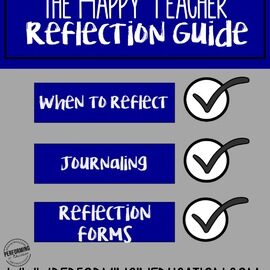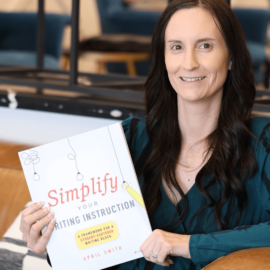Every year there’s a teacher or two that I watch leaving school at 6 PM lugging home an entire cart full of papers to grade. I just want to scream “NOOO!” and jump on it like a hand grenade. Kidding aside, grading every single piece of work your students do will not only burn you out pretty quickly, but it’s also a disservice to the students to be grading like this.
Learning how to grade is a skill that sometimes takes years to master. The tips in this post will help save your sanity, and make grading more fair for your students.
How to Grade in Upper Elementary
- Assessments are graded and put into the grade book. That’s a given.
- Other than assessments, students should not all be graded on the same scale. We’re looking for improvement, and eventually mastery here, not simply 9/10 problems correctly match the answer key. Students show mastery in different ways.
- We have bad days, kids have bad days. I remember going through a stack of papers and having only one student who got it. That’s on me, not them.
Observational Grading
Observations are absolutely the best way to know if your students are mastering the standard! Work they turn in to grade may or may not have been influenced by their partner’s work. Walking around and asking questions while the students are working is the best way to gauge their mastery, and figure out where they need help. I carry around an anecdotal chart (I have a 10-second memory, it’s a running joke in my classroom), where I write what I see in my class. I’ve seen other teachers write on post-it notes for individual students and stick it inside the student’s file, but I hate filing, and I love spreadsheets. When it comes around to small group time, I know exactly what each student needs – no guessing.
- If you’re tech savvy, you can save these records digitally using Google Docs (I now walk around with my i-pad and punch observations into a Google doc that I can easily share with Resource teachers and Inte) View a post on this over at Think, Share, Teach.
- You can also download the form I use for standard-based observations below, or create your own spreadsheet in Microsoft Excel.
Showing Mastery Through Portfolios
I’ve found that student work portfolios provide a sense of accountability over their grades. Before I started using portfolios, students turned in absolutely everything in hopes of just getting enough points to get a good grade, and they never really knew what their grade was until report card time.
My students have “mailboxes”, which I know is something you see more in the primary grades, but I love organization. When they complete their assignments, they turn it in to their own mailbox. If the assignment is notes or something else for them to use at a later date, they keep it in their own binders.
Cardboard Mailboxes at Walmart
Wood Mailboxes (a larger investment, but they will last a lot longer)
You can also use a plastic filing bin ($8 at Walmart) and give each student a folder with their name on it, and set it up on a table so it’s accessible.
At the end of the week, my students go through their boxes and choose a piece of work from each subject to include in their Student Portfolio. When I make copies, I have EVERYTHING hole punched, so they can slip it right into their folder. They take home everything else from the week.
They write a reflection about the work on a post-it note, then return their portfolio to me. Here are the directions I give them for the reflections:
Turning These Pieces into Grades
- Formative Assessments: I place my observations in this part of the grade book, based on if they are showing mastery of the standard in class.
- Course Work: I look at their portfolios every Friday after school, and enter a grade. The students are graded on their improvement as an individual on the standard, and the effort they put into the assignments. When I’m grading portfolios, I compare the student to themselves and what they are capable of (apples to apples) not to other students (apples to oranges). This counts as my “student work” piece in the grade book, which is a lot like participation. It was a concern for me when I first started that students may think they only have to complete 1 activity per week to get the grade, but it has never been a problem. The expectation in my classroom is that all students are engaged and working at all times.
- Summative Assessments: These are the end of standard or end of unit tests, and they receive the grade they scored on the test.
In the end, if you look at each student’s grade and it makes sense to you, then you’ve done a good job making it balanced and fair. The last thing we want to do is discourage students who are setting goals and working hard towards them by having them constantly having failing grades.





Pensive Sloth says
Having students reflect on their work is so powerful, especially if their thoughtful reflections can impact the grades they earn. I love your honest, real-life approach to grading. Thanks for sharing!
Krista Mahan Teaching Momster says
One of the BIGGEST reasons I wish we would move to standards-based assessments! Either they get it or they don't. Teachers do not all grade the same. An A in one class may only be a B in another class. But, especially in elementary school, we want to know what they can and cannot do, not what grades they receive on their report card.<br /><br />One of the time savers I use is to look over
Mrs Smith says
I totally agree when it comes to homework! I grade them on the fact that they were responsible enough to attempt to complete it and bring it back.
Martha Hach says
I love your approach to grading. Going through all those papers is honestly my least favorite thing about teaching. I like how you place the responsibility of the initial evaluation of work on the students (is this good enough to go in my portfolio?). Going to chew on this for a bit. Thanks!
Pam Olivieri says
Awesome post April! I am so guilty of grading too much! Time to chillax!<br />Pam<br /><br /><a href="http://mrsosrockinresources.blogspot.com" rel="nofollow">Rockin Resources</a>
Angela S says
I love this post! I teach students with special needs, and completely agree that no two students will show progress in the same form. Like you, I also use observations to assess individual student growth. I use portfolios for their writing, but after reading your post, I am now thinking of new ways I can use student portfolios. Love it! I am your newest follower.<br /><br />I nominated you